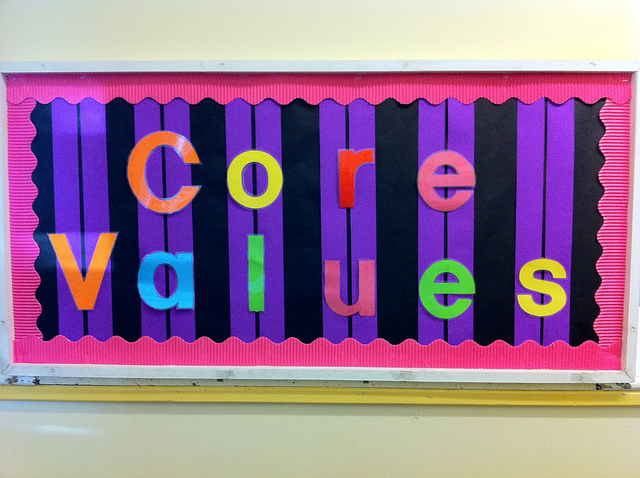Here’s a typical scenario. You want to create a stronger culture, so you ask your people to articulate some kind of ideal culture. They tell you all the aspects they wish were present in your culture, and probably complain about some of the problems they now face, and you end up developing a list of ideas that capture what you think would be an awesome culture: collaboration, quality, innovation, integrity, etc. This becomes your core values list, which then gets word-smithed over a period of weeks (or months) and then rolled out to the staff with much fanfare.
And now your employees trust you even less.
Why? Because that lovely set of ideals is probably already not being met. And instead of actually solving problems that they identified months ago, you created a list of impressive sounding values that may feel accurate to you (the leader), but represents a list of instantly broken promises to many of your employees.
Core values are well intended, for sure, but if you want to create a stronger culture, start by painting a truly honest picture of what is. The ideals and the changes will come later, but the first step is to clarify exactly how your culture operates. How agile are you? How do you do innovation? How do you manage transparency? There are no inherently right or wrong answers to those questions, but until you can come up with truly honest answers to them, the work on values and other ideals will be misguided.
Stop treating core values as some sort of independent exercise. The work of articulating your culture and then aligning it with success drivers is at the heart of culture management—a function that should be operating continuously inside your organization. Don’t start that work by getting off on the wrong foot!

